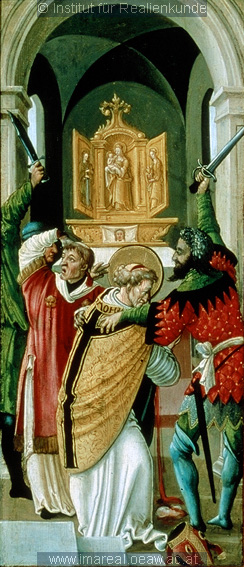
From the Bayerisches Nationalmuseum

| Nathan Robinson wrote: |
| Here's another. Just a phone. No details, though. |

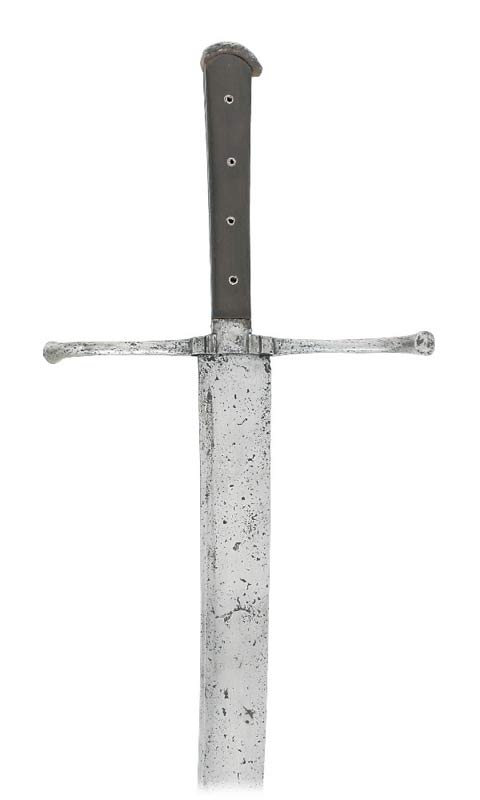
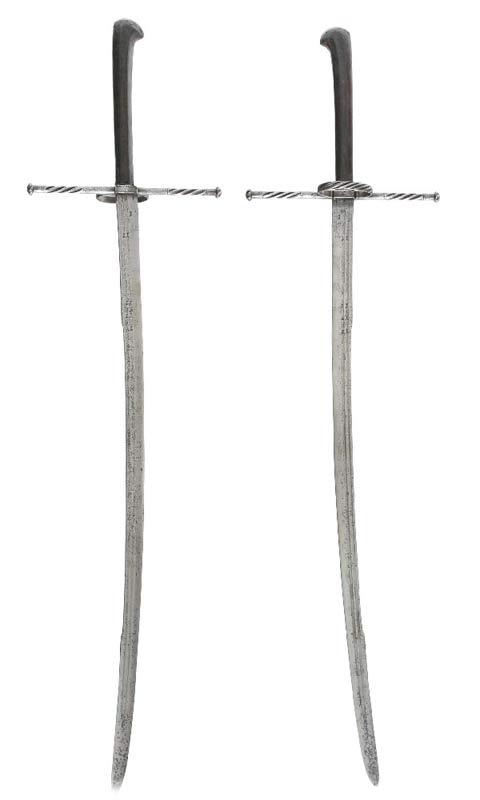
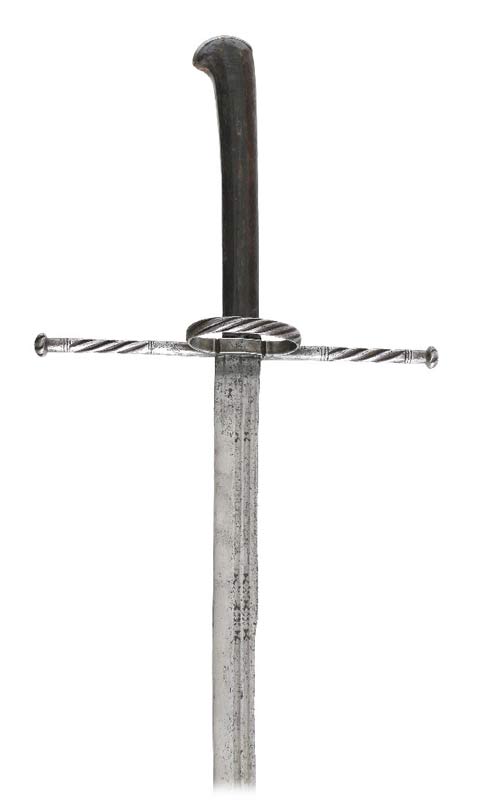
| Nathan Robinson wrote: |
| I have a couple more photos to share.
Hauschwert, Deutschland um 1530. A Rare German Sword, circa 1530. A slightly curved, single-edged blade with fullers on both sides and a double-edged point. Simple, 'S'-shaped and curved quillons. Wooden hilt plates and lunashaped pommel. Length 101 cm |
| Bill Grandy wrote: |
| it's nice to have it within the thread anyway, in case that auction disappears. |
| Caleb Hallgren wrote: |
| How about a woodcut of messer-men from the Triumph of Maximilian:
http://www.myArmoury.com/albums/photo/8025.html |
| Mike West wrote: |
| I've noticed that many messers have a single side ring, or downward curving bar. Why only one and, not two? It seems as if the purpose of the side ring would be to protect the hand, or help catch an opponents blade suring a defensive maneuver.
But only one side? Wouldn't two have been better? |
| Peter Grassmann wrote: |
| Maybe I will translate my article and present it to you, if you are interested. |

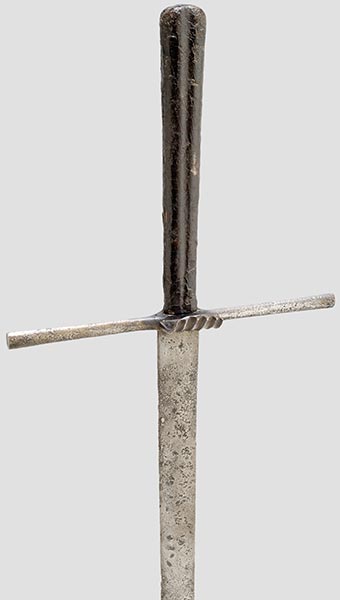
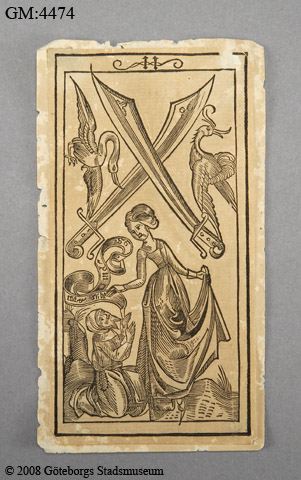
| Peter Grassmann wrote: |
|
Maybe I will translate my article and present it to you, if you are interested. Unfortunately, I can't name many (literary) sources, as most of it is based on many years of experience and looking at hundreds of originals. Literature doesn't deal with this particular devolpment much, and the Bauernwehren are almost never discussed. Best regards, Peter |
| Patrik Erik Lars Lindblom wrote: |
| :) Some kind of game card from around year 1500 with messer's on it.
Hope it fit's in here! :cool: Link to more info about the card and not the messer's on it |
